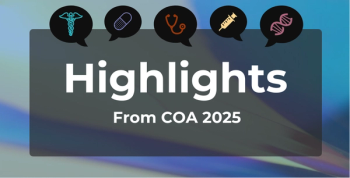
We Must Make HIV-Related Self-Care Famous, Panel Agrees
According to the World Health Organization, self-care is “the ability of individuals, families, and communities to promote and maintain health, prevent disease, and cope with illness with or without the support of a health care provider.”
According to the World Health Organization, self-care is “the ability of individuals, families, and communities to promote and maintain health, prevent disease, and cope with illness with or without the support of a health care provider.” Much like telehealth, self-care has reached a new level of importance and necessity in the world of
Self-care can prevent disruptions to ongoing care, engage at-risk populations in initiating care, and protect the health of vulnerable patient populations, as well as health workers. A satellite session during
The international panel discussion was led by Andrea Gunawan, a sexual health activist from Jakarta, Indonesia, and she was joined by:
- Davina Canagasabey, MA, PATH, United States
- Khanyiswa Kwatsha, Wits RHI, Zimbabwe
- Anderson Langdon, MSA, executive director, Barbados Family Planning Association, Barbados
- Filippo Zimbile, Aidsfonds, Netherlands
These experts touched on a wide range of topics, from how strong their clients are to the impact of COVID-19 to making self-care more accessible, by answering the following questions:
- What are health care clients capable of?
- How has COVID-19 impacted HIV prevention and treatment services?
- What has been the biggest impact of self-testing?
- How can we extend services to HIV during COVID-19?
- How can we reach people out of care?
Our Clients
Zimbile took on the first question, praising not only his clients’ abilities to take on a lot themselves, but their willingness, which is backed by their preference for privacy and wanting to avoid stigma. This applies to not only HIV, but self-testing for sexually transmitted infections, too.
“Key elements of this self-care model are to encourage self-care as much as possible among clients so that you can use the capacity of the health professionals to support those who really need it, the most vulnerable clients,” he stated.
COVID-19’s Impact
“I think what has happened is that COVID-19 has fast forwarded how we really think about health care and how we treat our staff and develop care,” Langdon said when discussing the effects of the COVID-19 pandemic on HIV prevention and treatment.
He touched upon a very important point in this regard: Health care staff have to be on board with self-care. To be effective in their outreach and education efforts for self-care for their patient-clients, they have to believe in the incredible potential of self-care approaches. In addition, communication with communities has to be constant for interventions to be able to change to meet the needs of the highest-risk groups.
Canagasabey, meanwhile, noted that many health facility resources have been redirected toward COVID-19 efforts, which has created “additional obstacles for individuals and particularly vulnerable populations to access HIV testing treatments.” This can be seen in the lowers numbers of persons seeking HIV testing, treatment, and prevention services. In turn, PATH altered how it provides services by increasing delivery options to include, for example, pharmacies, virtual counseling services, and an innovative hashtag-oriented self-testing social media campaign.
HIV Self-Testing’s Impact
“I think it’s already been shown that accessibility and acceptability, that among people who have not been tested yet, that they can now be reached and supported,” Zimbile pointed out. Again, he noted the attractiveness of privacy in this regard, but also the ability to feel safer, which has improved outreach.
Professional services in the health care sector have also been affected, but in a positive way. Wider implementation of self-testing due to the HIV pandemic’s current overlap with the COVID-19 pandemic has made service delivery more efficient because clients now have greater awareness of their medical needs, not only remotely but when in-clinic visits are necessary. Self-testing has also cut down on clinics’ workload.
Self-testing is also preparing the next generation to be their own advocates for self-care, Zimbile added.
Extending HIV Services During COVID-19
“The idea of really differentiating services and putting clients and people at the center of how services are delivered can be applied across the cascade and similarly to treatment,” Canagasabey contributed, adding that it’s been necessary to decentralize services out of the clinic.
This can be seen in pharmacies being used as dispensing points, providing antiretroviral treatment (ART) services within communities, and offering home delivery of ART, all to limit patients’ exposure. Self-help groups have also gone virtual, and more community-based support groups have sprung up, albeit with social distancing and masking procedures.
“I think differentiating services is key to really driving us towards ending the HIV epidemic,” she said.
Reaching People Out of Care
Mobile technology is one thing that has made reaching out much easier to those who can’t get to the clinic, Kwatsha stated. Another is putting in the foot traffic among communities, actually going to those places where people hang out, asking around, and speaking to the people.
Typically, it’s easier for health personnel to go to the people, especially in South Africa, rather than for those who need services the most to come to clinic, she said. This can save clients money and time, in the short and long term. All of this serves to make clients, potential clients, and at-risk populations feel important.
“When someone feels that they are important,” she concluded, “it's very easy for them to take their medication and also to continue living a healthy lifestyle.”
Overall, this panel believes that successful prevention and treatment depend on clients being able to access services and use them. That self-care, as a client-centered service, can be a critical tool going forward to ending the HIV epidemic.
Newsletter
Stay ahead of policy, cost, and value—subscribe to AJMC for expert insights at the intersection of clinical care and health economics.








